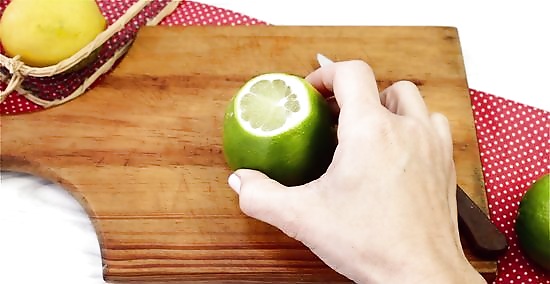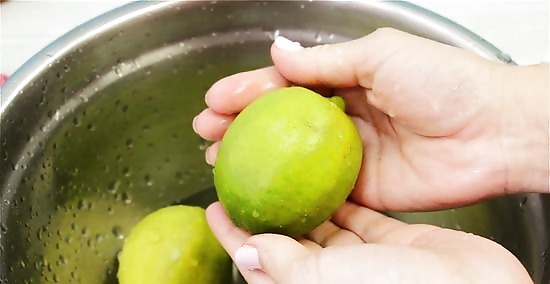
views
Rind Removal

Clean the lemon to prepare it for peeling. It's a good idea to wash the lemon under cold water prior to peeling it, especially if you intend on using the peel later. You'll also want to remove any remaining stickers at this point.

Remove the top and bottom from the lemon using a small paring knife. Lay the lemon length-wise on a chopping board, and holding it secure with one hand, top-and-tail the fruit. Aim to chop no more than a centimetre width round from either end, so that you’re not catching too much flesh along with the peel.

Sit the lemon on one of its now-flat ends atop your chopping board. This will ensure that the lemon stays upright whilst you cut the peel from its sides. Use your non-dominant hand to keep the lemon in position for the next step.

Cut the skin from the lemon. Holding your paring knife horizontal, bring the blade down the sides of the lemon, cutting the rind from top to bottom in strips. You want to follow the natural curve of the lemon, so that you’re not cutting straight up and down with your knife. To do this, you will have to slowly turn the fruit with your holding hand. You can either cut the lemon rind into vertical strips (as above), or you can revolve the lemon against the knife and remove the entire skin in one spiral peel. Try to cut as close to the flesh as possible. This means that along with the rind, you will also want to remove the pith (the spongy white layer between the flesh and rind). If you miss any of the pith on the initial peel, go back in with your paring knife to remove the rest.
Using a Peeler

Clean the lemon ready for peeling. After removing any stickers, give the fruit a scrub under cold water. Then, set yourself up over a chopping board or near the waste disposal ready to peel. Make sure your potato-peeler is close to hand. Ensure that the fruit is well-dried, so that your peeler doesn't slide over the surface of the skin.

Take the lemon in one hand, the peeler in the other. Hold the lemon in your non-dominant hand, and grasp the potato peeler with your other hand, thumb firmly pressing into the handle so that it won't slip in the course of peeling. You may want to hover the lemon just over the waste disposal: alternatively, you might rest the backside of your lemon-holding hand on your chopping board. Either way, the knuckle-side of your hand should be facing toward the floor.

Use your potato peeler to peel the lemon in upward strokes. Bring the blade-side of your peeler down firmly on the lemon's rind, digging in until you break the skin. Drag the peeler from one end of the fruit to the other.The skin should come off in clean strips, like when you peel a potato. Ensure that your strokes move from the bottom of the lemon up to the top, so that the blade of the peeler is motioning away from you. If you’re working with an organic or home-grown lemon, the surface of the fruit may be more knobby and thus harder to peel. Take extra care when dealing with lemons that have uneven skin.
Finger-Peeling

Cut the very top and bottom clean off the lemon. Do this by laying the fruit lengthways on your chopping board, and using a paring knife to chop one narrowed end off first, and then the other. You should be left with a barrel-shaped fruit.

Use your index finger nail to gouge a deep line through the lemon. You should start at one of the just-cut ends, where the skin will be lifting slightly from the flesh. You should be able to break through the skin easily, leaving flaps of rind to the left and right of the line you’ve dug. Some lemons have skins which are tougher than others, or which are more strongly fused to the pith than normal. The finger-peel method may be less successful when dealing with fruit like this.

Push your thumb under one of the flaps of rind you've lifted with your nail. Keeping your thumb under the skin, wrap the rest of your fingers on top of the skin and around the fruit. The lemon should be placed in the pit of your non-dominant hand, so that you are using your dominant thumb to do the pulling.

Use your thumb and forefinger to pull and peel. With an uplift motion, pull the peel away from you whilst revolving the fruit inwards toward you with your unoccupied hand. Continue pulling until the rind comes off in one big strip.
Zesting

Wash the fruit and get your working station ready. Wash the lemon well under cold water, and rub it dry. Ensure in advance that you've got a cutting board beneath your workspace in order to catch the little mountains of zest which will collect beneath the grater.

Grab your standing grater or handheld zester. Hold the lemon firmly in the palm of your dominant hand, and hold the grater or zester firm with your other hand.

Rub the lemon firmly up and down the grater face until the zest is entirely removed. You will need to revolve the lemon around after every 4-5 rubs until you have zested it clean. You will know when you have removed all the zest from the fruit when your lemon is no longer bright yellow in hue (a lemon's pigment is found in its rind). Using this method will most likely leave most of the pith on the lemon. Remove the pith with a paring knife after zesting, if you need.




















Comments
0 comment